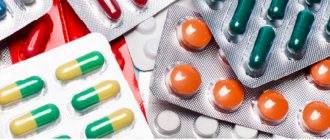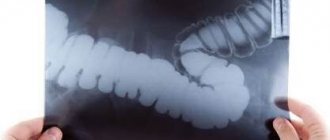Antibiotics are used to treat and/or prevent certain types of bacterial infections. They act on pathogens in two ways: bactericidal (killing bacteria) and bacteriostatic (preventing their reproduction).
Antibiotics are ineffective against viral infections (influenza, ARVI) and are rarely used for the treatment of mild bacterial diseases, when the immune system is able to cope with pathogenic microbes on its own. The drugs are prescribed for the treatment of acute and chronic bacterial infections, in the postoperative period, when the risk of more serious complications is high. For some patients, a course of medication is indicated as a preventative measure (antibiotic prophylaxis).
Types of antibiotics
There are hundreds of different types of antibiotics, but most can be roughly divided into six groups:
- Penicillins are widely used to treat various infections: skin, respiratory system, urinary tract.
- Cephalosporins are used to treat a wide range of serious infections, including sepsis and meningitis.
- Aminoglycosides are prescribed mainly in hospitals (outpatient - under the strict supervision of a doctor) for the treatment of severe pathologies. This group of drugs can cause serious side effects: hearing loss and kidney pathology. Aminoglycosides are used, usually in the form of injections or eye/ear drops.
- Tetracyclines are used to treat a wide range of infections: skin (severe forms of acne and rosacea), urogenital.
- Macrolides are prescribed for infectious processes in the lungs and/or as alternative drugs for patients with allergies to penicillin. They are also used to treat penicillin-resistant strains of bacteria.
- Lincosamides are effective in the treatment of infectious bone lesions.
Taking probiotics for illnesses and weight loss
For women
Probiotics for women (to prevent diseases of the genitourinary system, women are recommended to take probiotics containing the following types of bacteria):
- Rhamnosus
- Reuteri
- Bacillus coagulans
For diarrhea
With diarrhea, a person experiences bowel movements that are too frequent. Sometimes this condition even becomes chronic.
Special studies have been conducted in this area that have shown the effectiveness of using probiotics (stools become less frequent) if diarrhea was caused by an introduced infection, poisoning, or the so-called “stomach flu” (gastroenteritis). In 34 experiments, it was found that with chronic use, probiotics reduced the likelihood of diarrhea by approximately 34%. Study on the effect of probiotics on diarrhea when taking antibiotics: https://pubmed.ncbi.nlm.nih.gov/22570464/
To prevent traveler's diarrhea, choose probiotics that contain:
- Rhamnosus
- Lactobacillus GG
- Sachromyces boulardi
- Lactobacillus acidophilus
- Lactobacillus bulgaricus
When infected with H. pylori
Application is necessary before starting antibiotic therapy 2 - 3 weeks and should continue after for 1 - 2 months:
- Rhamnosus
- Lactobacillus planturum
- Lactobacillus lactis
For constipation
When constipated, a person rarely goes to the toilet. The reason is that feces cannot move freely through the intestines. This happens to every person from time to time, but in older people or those who move little and are forced to lead a sedentary lifestyle, this condition can develop into a chronic stage. Chronic constipation also occurs in children or can develop against the background of certain diseases (IBS, for example).
For constipation, laxatives or stool softeners are prescribed. The use of probiotics to treat constipation has become popular relatively recently. It turned out that the strains contained in them cope well with constipation in people of any age.
The following drugs are recommended:
- Lactis
- Coagulans
- Longum
- Cerevisiae
- As well as combinations of L. acidophilus, L. reuteri, L. plantarum, L. rhamnosus and B. animalis
For weight loss
Modern scientists have already proven that the presence of certain bacteria in the intestines can affect a person’s weight, that is, if you are overweight, then taking probiotics will help you reduce it (which will certainly have a positive effect on your overall health).
Special studies and experiments were carried out, in which both animals and people were involved. As a result, it turned out that there are bacteria, thanks to which the body absorbs less fat and calories, that is, it gets rid of accumulated excess weight.
For example, studies conducted in 2014 showed that the most effective combinations of Lactobacillus rhamnosus strains with Bifidobacterium lactis and Lactobacillus gasseri with Lactobacillus rhamnosus reduce body weight.
One experiment involved obese men taking L. gasseri every day for 12 weeks, resulting in a loss of approximately 8.5% body fat. In the group of women, there was a decrease in body fat by 16%. Moreover, during the maintenance phase, the participants continued to lose excess weight.
Research shows that even if a person consumes a lot of high-calorie foods, probiotics can still keep them from gaining extra pounds. This was confirmed by the following experiment: a group of young people were asked to take probiotics for a month and at the same time increase the amount of calories consumed per day by a thousand. The result: they gained less weight than those who used a placebo as part of the experiment.
However, scientists are in no hurry to make definitive statements because most experiments have not been so convincing. In order to say with complete confidence that probiotics act 100% as a drug for weight loss, more than one study will have to be conducted. Suitable for weight loss:
- Lactobacillus gasseri
- Lactobacillus rhamnosus
- Lactobacillus rhamnosus and Bifidobacterium lactis
Targeted nutrition tips
that will increase your energy level by 10 out of 10
From TOP nutritionists of the MIIN
Get tips
Improved brain function
The functioning of the brain is directly related to what bacteria function in a person’s intestines. Scientists say this based on research.
Here are a few drugs that help improve brain function:
- Bifidobacterium breve
- Lactobacillus rhamnosus
- Bifidobacterium infantis
- Bifidobacterium longum
- Lactobacillus helveticus
Improved heart function
Some probiotics have been shown to reduce total and “bad” LDL cholesterol.
There are a number of probiotics that can have a beneficial effect on heart function and reduce the likelihood of developing heart-related diseases. Special research has been conducted in this area, and the results have been impressive. In the people who participated in the experiments, the content of bad cholesterol in the blood significantly decreased, and the amount of useful cholesterol increased.
These probiotic preparations in 14 experiments demonstrated a decrease in LDL and triglyceride levels, and HDL levels from these probiotics increased slightly.
Sometimes experts mention probiotics as drugs that help lower blood pressure. The researchers examined the results of nine experiments in this area and found that patients who took 10 billion CFUs over eight weeks had their high blood pressure drop significantly and reach normal levels.
Drugs to improve cardiac activity:
- Lactobacillus reuteri,
- Lactobacillus acidophilus
- Bifidobacterium longum.
How to take antibiotics correctly
It is important to take antimicrobial medications correctly to prevent the development of resistance, a condition where a strain of bacteria no longer responds to treatment with one or more types of antibiotics. Therefore, self-medication in the case of antibiotics is not just harmful to health - it is dangerous!
Only a doctor should decide on the advisability of prescribing an antimicrobial agent, select a specific drug, dosage and determine the duration of use.
Antibiotics should be used strictly in the doses prescribed by the doctor. Oral forms (tablets, capsules, syrups) are drunk in accordance with the recommendations prescribed in the instructions: before/after meals. You cannot reduce or increase the dosage on your own: a low level of the active substance in the blood will not have the desired effect, and an excessive one will increase the risk of side effects.
It is very important to drink the entire prescribed course of antibiotics, even if the temperature has subsided and your health has improved. Stopping use risks the emergence of resistant forms of bacteria. You cannot skip taking the next dose: the effect of the medicine must be continuous, that is, one portion of the substance “clings” to another. Interruptions in admission are unacceptable. If you accidentally miss one dose, drink the medicine “as soon as you remember”, and then continue the course as usual. Do not take a double dose to make up for a missed dose.
Intestinal dysbiosis and antibiotic-associated diarrhea, diagnosis and treatment
The study of intestinal microflora began in 1886, when F. Escherich described Escherichia coli (Bacterium coli communae). In 1908, Nobel laureate Russian scientist Ilya Ilyich Mechnikov proved the necessity of intestinal bacteria for health and longevity. To date, the presence of 500 types of microbes has been established in the intestines of a healthy person. Normal microbial flora is one of the barriers to bacteria entering the intestines. It stimulates immune defense and increases the secretion of IgA into the intestinal lumen. Escherichia coli, enterococci, bifidobacteria, acidophilus bacilli have antagonistic properties and are able to suppress the growth of pathogenic microorganisms. Violation of the microflora composition leads to a decrease in the body's resistance to intestinal infections.
There are mucoid microflora (M-microflora) - microorganisms associated with the intestinal mucosa, and cavity microflora (P-microflora) - microorganisms localized in the intestinal lumen.
In relation to the macroorganism, representatives of the intestinal biocenosis are divided into 4 groups:
- obligate microflora (main intestinal microflora - bifidobacteria, lactobacilli, normal E. coli, propionobacteria, peptostreptococci, enterococci);
- facultative (opportunistic and saprophytic microorganisms - bacteroides, staphylococci, streptococci, peptococci, yeast-like fungi, veyonella, fusobacteria, bacilli);
- transient (occasional microorganisms that are not capable of long-term residence in the body - flavobacteria, pseudomonads);
- pathogenic (pathogens of infectious diseases - Shigella, Salmonella, Yersinia, etc.).
When microbes utilize indigestible carbohydrates (fiber), short-chain fatty acids are formed. They provide intestinal cells with energy carriers, improving the trophism of the mucous membrane. Insufficient fiber in the diet leads to decreased synthesis of short-chain fatty acids. As a result, dystrophic changes in the epithelium occur and the permeability of the intestinal barrier to antigens of food and microbial origin increases.
Under the influence of microbial enzymes in the ileum, bile acids (BAs) are deconjugated and primary FAs are converted into secondary FAs. Under physiological conditions, 80–95% of FAs are reabsorbed, the rest are excreted in the feces in the form of metabolites. The latter promote the formation of feces, inhibit the absorption of water, preventing excessive dehydration of feces. Excessive bacterial contamination of the small intestine leads to premature deconjugation of fatty acids and secretory diarrhea.
Thus, the morphological and functional state of the intestine depends on the composition of its microflora.
In the jejunum of healthy people there are up to 100,000 bacteria per 1 ml of contents. The main part of them are streptococci, staphylococci, and lactic acid bacilli. In the distal ileum, the number of microbes increases due to enterococci, Escherichia coli, bacteroides and anaerobic bacteria.
The microbial composition of feces does not reflect the complete picture of the intestinal biocenosis and does not provide operational information about the composition of microorganisms in the intestine. In practice, data on only 15–20 types of microbes contained in feces are taken into account. Usually the number of bifidobacteria, lactobacilli, enterobacteria, E. coli, Proteus, Enterococcus, Staphylococcus aureus, Pseudomonas aeruginosa and Candida are examined.
Intestinal dysbiosis is a violation of the ecological balance of microorganisms, characterized by a change in the quantitative ratio and qualitative composition of indigenous microflora in the microbiocenosis. The term “dysbacteriosis” was first introduced by A. Nissle in 1916.
The severity of dysbiosis is determined by the degree of decrease in bifidobacteria and other obligate microorganisms and an increase in the number of opportunistic and pathogenic species.
I degree - a decrease in the number of obligate representatives (bifidobacteria and/or lactobacilli) by 1–2 orders of magnitude, without an increase in opportunistic microflora (OPM), an increase in the number of OPM with a normal number of bifidobacteria. II degree - moderate or significant decrease in the number of bifidobacteria, combined with pronounced changes in aerobic microflora (reduction of lactobacilli, appearance of altered forms of Escherichia coli, UPM in high quantities). III degree - a large number of UPM, both of one type and in associations, isolation of pathogenic microorganisms (Mekhtiev S.N., Grinevich V.B., Zakharenko S.M.).
In the clinic of dysbiosis, the following key syndromes are distinguished:
- dyspeptic (decreased appetite, regurgitation, belching, nausea, vomiting);
- intestinal syndrome (bloating, rumbling intestines, tendency to constipation or loose stools with undigested food debris);
- secondary malabsorption syndrome (persistent diarrhea with impaired absorption of monosaccharides and electrolytes),
- polyhypovitaminosis (dry skin, hair loss, brittle nails, cheilitis, stomatitis).
New approaches to the diagnosis of dysbiosis
An alternative to routine bacteriological studies is chemical methods for differentiating microorganisms and, in particular, gas chromatography (GC) combined with mass spectrometry (GC-MS). The method is based on identifying the components of bacterial cells that appear as a result of their natural death or attack by the immune system. Minor lipid components of microbial membranes are used as markers. Based on their content, up to 170 species of bacteria and fungi in various biological environments can be determined within a few hours.
Almost 50% of the biomass of the wall microflora are actinomycetes, which occupy an intermediate position between bacteria and fungi. About 25% of the microbial flora is represented by aerobic cocci (staphylococci, streptococci, enterococci and coryneform bacteria). The number of bifido- and lactobacilli ranges from 20 to 30%. Other anaerobes (peptostreptococci, bacteroides, clostridia, propionobacteria) make up about 10% in the small intestine and up to 20% in the large intestine. Enterobacteriaceae account for 1% of the total number of microflora of the mucous membrane.
Up to 90–95% of colon microbes are anaerobes (bifidobacteria and bacteroides) and only 5–10% of all bacteria are strict aerobic and facultative flora (lactic acid and E. coli, enterococci, staphylococci, fungi, proteus).
Dysbiosis is not an independent disease. Its appearance is facilitated by disorders of intestinal digestion, motility, local immunity, antibiotics, antacids and other medications. It is necessary to establish the cause that caused dysbiosis, and not try to “cure” the intestinal microflora based on its bacteriological analysis of stool.
The properties of microbes inhabiting the intestines are not always taken into account when prescribing antibiotics. Antibacterial drugs suppress the growth of not only pathogenic microorganisms, but also normal microflora. As a result, saprophytic microbes with high resistance to drugs multiply and acquire pathogenic properties.
Antibiotic-associated diarrhea
Patients receiving antibiotic therapy may develop diarrhea caused by intestinal dysbiosis (AAD - antibiotic-associated diarrhea). The frequency of such diarrhea ranges from 5–25%. The reason for this is a decrease in the number of microbes sensitive to the antibiotic and the emergence of resistant strains that are not normally present. The most well-known representative of such microorganisms is the pathogenic strain Clostridium difficile (Cl. difficile), but the cause of diarrhea associated with antibiotics can also be other microbes that can enhance the secretion of ions and water and damage the intestinal wall. These are staphylococci, Proteus, yeast fungi, enterococci, Pseudomonas aeruginosa, Klebsiella. Based on the type of diarrhea, AAD is usually classified as secretory and inflammatory types.
Antibiotic-associated diarrhea is most often caused by lincomycin, ampicillin, clindamycin, benzylpenicillin, cephalosporins, tetracyclines, and erythromycin. The method of administration of the antibiotic does not matter much. When taken orally, in addition to the eradication of microorganisms, the antibiotic affects the mucous membrane of the small intestine. When administered parenterally, antibiotics affect the intestinal biocenosis, excreted with saliva, bile, and secretions of the small and large intestines.
Symptoms of AAD in most patients usually appear during treatment, and in 30% - within 7-10 days after its cessation.
Most researchers consider clostridia, in particular Cl., to be the etiological factor of AAD. difficile. Among the adult population, the level of its carriage is low and equal to 2–3%. Reproduction conditions for Cl. difficile are an anaerobic environment and suppression of normal intestinal microflora.
Clinical manifestations of AAD range from mild diarrhea to severe pseudomembranous colitis (PMC). MVP is an acute intestinal disease that is a complication of antibacterial therapy. It has been established that it is caused by Cl. difficile.
Symptoms
The main symptom of AAD is profuse, watery diarrhea, the onset of which is preceded by the administration of antibiotics for several days or more. Then cramping pain in the abdomen appears, subsiding after stool. In cases where fever occurs, leukocytosis increases in the blood, and leukocytes appear in the stool, PMH should be suspected.
After discontinuation of the antibiotic, in some patients the symptoms quickly disappear. With MVP, despite the cessation of antibiotic therapy, in most cases the frequency of stool increases, dehydration and hypoproteinemia appear. In severe cases, dehydration quickly sets in, toxic dilatation and perforation of the colon develop, and death is possible.
Diagnosis
The diagnosis of AAD is made based on the association of diarrhea with the use of antibiotics. The diagnosis of MVP is confirmed by bacteriological examination of stool and determination of the Cl toxin in it. difficile. The frequency of detection of the toxin in the stool of patients with AAD does not exceed 15%.
In patients with diarrhea associated with Cl. difficile, significant leukocytosis is observed. There is evidence that patients with leukocytosis of 15800 and above are highly likely to develop MVP caused by Cl. difficile. This is explained by the fact that toxin A, secreted by Cl. difficile causes inflammation, fluid secretion, fever and convulsions. Therefore, in all patients with AAD, occurring with intoxication and leukocytosis, 15800 and above should be considered the cause of diarrhea Cl. difficile.
Parfenov A.I., Osipov G.A., Bogomolov P.O used the GC-MS method to assess the composition of the microbial flora of the small intestine in 30 patients with AAD and found that diarrhea can be associated not only with an infectious agent (Cl. difficile) , but with a significant change in the normal microflora towards an increase in the number of 7 to 30 out of 50 controlled microorganisms. In this case, the total colonization of the small intestine increases 2–5 times compared to the norm.
In patients with AAD, most often there are no morphological changes in the colon. In severe cases, endoscopy reveals 3 types of changes: 1) catarrhal inflammation (swelling and hyperemia) of the mucous membrane; 2) erosive-hemorrhagic lesion; 3) pseudomembranous lesion.
The endoscopic picture of MVP is characterized by the presence of plaque-like, ribbon-like and solid “membranes”, soft but tightly fused to the mucous membrane. The changes are most pronounced in the distal parts of the colon and rectum. The mucous membrane is edematous, but not ulcerated. Histological examination revealed subepithelial edema with round cell infiltration of the lamina propria, capillary stasis with the release of red blood cells outside the vessels. At the stage of formation of pseudomembranes, infiltrates are formed under the surface epithelium of the mucous membrane. The epithelial layer is raised and absent in places: the bare areas of the mucous membrane are covered only by desquamated epithelium. In later stages of the disease, these areas may occupy large segments of the intestine.
Differential diagnosis
The association of diarrhea with antibiotic therapy usually does not create difficulties in diagnosing AAD. In severe cases, the picture of MVP may resemble cholera or a fulminant form of ulcerative colitis, Crohn's disease. However, the latter are characterized by more or less pronounced bloody diarrhea, which is not typical for MVP. Nevertheless, the possibility of developing erosive-hemorrhagic changes in the mucous membrane during AAD does not exclude the appearance of bloody discharge from the rectum in some patients.
Treatment of AAD
Etiotropic therapy of AAD and MVP caused by Cl. difficile, most authors consider the prescription of vancomycin and metronidazole (Trichopol, Metrogyl).
Immediately discontinue the antibiotic that caused the diarrhea. Vancomycin is prescribed at an initial dose of 125 mg orally 4 times a day, if necessary, the dose is increased to 500 mg 4 times a day. Treatment is continued for 7–10 days. Metronidazole is given 0.5 g orally 2 times a day (or 0.25 g 4 times a day).
Bacitracin is also used at a dose of 25 thousand IU orally 4 times a day. Treatment is carried out for 7–10 days. Bacitracin is almost not absorbed, resulting in a high concentration of the drug in the colon. For dehydration, infusion therapy and oral rehydration (Regidron, Citroglucosolan) are used. Cholestyramine is prescribed to bind toxin A.
There are reports of the possibility of treating AAD also with large doses of probiotics. S. Perskyp and L. Brandt (2000) found that normal human microflora is able to eliminate diarrhea caused by Cl. difficile. The bactericidal effect of normal microflora ensures recovery in more than 95% of patients with AAD associated with Cl. difficile. It prevents the appearance of chronic clostridial and other infections, which can cause chronic gastrointestinal disorders in some patients. Probiotic therapy for AAD and MVP should be started as early as possible, without waiting for confirmation of the diagnosis.
Since the number of microbes that provide a therapeutic effect is several orders of magnitude higher than the doses of conventional bacterial preparations, the issue of local delivery of probiotics to the intestines is being discussed. This can be done using saline enemas, a nasoduodenal tube, or a colonoscope. The latter method attracts attention because it involves introducing probiotics directly into the proximal colon.
One of the main probiotic drugs used to treat AAD is Linex. This is a combined drug containing components of natural microflora from different parts of the intestine. Containing bifidobacteria, lactobacilli and non-toxigenic lactic acid enterococcus maintain the balance of intestinal microflora and ensure its physiological functions: create unfavorable conditions for the reproduction and activity of pathogenic microorganisms; participate in the synthesis of vitamins B1, B2, PP, folic acid, vitamins K and E, ascorbic acid, provide the body with vitamins B6, B12 and biotin; by producing lactic acid and reducing the pH of the intestinal contents, they create favorable conditions for the absorption of iron, calcium, and vitamin D. Lactic acid bacteria carry out the enzymatic breakdown of proteins, fats and complex carbohydrates; carbohydrates and proteins that are not absorbed in the small intestine undergo deeper breakdown in the large intestine by anaerobes ( including bifidobacteria). The bacteria that make up the drug are involved in the metabolism of bile acids.
Linex contains lactic acid bacteria that are resistant to antibiotics. Adults and children over 12 years of age are prescribed 2 capsules 3 times a day after meals with a small amount of liquid. The duration of treatment is on average 1–2 months. When using the drug in recommended doses, no side effects were noted. Contraindications: hypersensitivity to the components of the drug or dairy products. Studies have not revealed that Linex has a teratogenic effect, and no negative effects of the drug have been reported during pregnancy and lactation. To preserve the viability of the components of the drug, it is not recommended to drink Linex with hot drinks; you should refrain from drinking alcohol.
The clinical manifestations of an allergy to lactic acid bacteria are similar to those of an allergy to dairy products, therefore, if allergy symptoms appear, the drug should be stopped to determine its causes. There have been no reported cases of Linex overdose. There were no undesirable interactions with other drugs. The composition of Linex allows it to be taken simultaneously with antibacterial agents.
For the symptomatic treatment of diarrhea, the following are also used: attapulgite adsorbent, 1.2–1.5 g after each loose stool; loperamide, 2–4 mg orally after each bowel movement (not more than 8 mg/day); diphenoxylate/atropine (Lomotil), 5 mg orally 4 times daily until diarrhea stops; belladonna tincture, 5–10 drops orally 3 times a day before meals; hyoscyamine (Levsin) 0.125 mg sublingually as needed or 0.375 mg orally 2 times a day; antispasmodic dicycloverine, 20 mg orally 4 times a day; codeine, 30 mg orally 2–4 times a day; octreotide (100–600 mg/day subcutaneously in 2–4 doses) is a synthetic analogue of somatostatin; enterosorbents (Smecta, Espumisan).
Treatment of dysbiosis itself
Standard therapy for dysbiosis is aimed at eliminating excess bacterial contamination of the small intestine, restoring normal microflora, improving intestinal digestion and absorption, restoring intestinal motility and increasing the body's immunoreactivity.
Antibacterial drugs are used according to indications to suppress the growth of pathogenic microflora in the small intestine. Antibiotics from the group of fluoroquinolones, penicillins, cephalosporins, tetracyclines or metronidazole are usually prescribed. The drugs are taken orally in normal doses for 7–10 days.
It is optimal to use agents that have a minimal effect on the symbiont microflora and suppress the growth of Proteus, staphylococci, yeasts and other aggressive strains. These include antiseptics: Intetrix, Enterol, Bactisubtil, Nifuroxazide, etc. For severe forms of staphylococcal dysbiosis, antibiotics are used: ofloxacin, oxacillin, amoxicillin. They are prescribed for a period of 10–14 days. If fungi appear in feces or intestinal juice, the use of natamycin, fluconazole and other mycostatics is indicated.
Bacterial preparations (probiotics) can be prescribed without prior antibiotic therapy or after it. They use Bifidumbacterin, Probifor, Bificol, Lactobacterin, Linex, Bifiform, Normoflorin L, D, B, Polybacterin, Narine, Acipol, Nutrolin V, Travis.
Another way to treat dysbiosis is to influence pathogenic microbial flora with metabolic products of normal microorganisms (prebiotics). One of these drugs is Hilak-Forte, a sterile concentrate of metabolic products of normal microflora: lactic acid, lactose, amino acids and fatty acids. These substances help restore the biological environment in the intestines necessary for the existence of normal microflora, suppress the growth of pathogenic bacteria, and improve the trophism and function of epithelial cells and colonocytes. One milliliter of the drug contains biologically active substances of 100 billion normal microorganisms. Hilak-Forte is prescribed 60 drops 3 times a day for a period of 4 weeks in combination with antibacterial drugs or after their use.
In addition, lactulose syrup (Duphalac, Portalac) is used, which acidifies intestinal juice and inhibits the growth of pathogenic microflora. The active substance is a synthetic disaccharide that is not hydrolyzed in the small intestine and enters the colon unchanged, where it is broken down under the influence of colon flora to form low molecular weight organic acids, which leads to a decrease in the pH of the intestinal contents.
Under the influence of the drug, the absorption of ammonia by the colon and its removal from the body increases, the growth of acidophilic bacteria (including lactobacilli) is stimulated, the proliferation of proteolytic bacteria is suppressed and the formation of nitrogen-containing toxic substances is reduced. The clinical effect occurs after 2 days of treatment. The drug in the form of a syrup for oral administration is prescribed to adults at a dose of 15–45 ml/day, the maintenance dose is 10–25 ml/day. The drug should be taken 1 time/day in the morning with meals, with water or any other liquid or food.
Side effects from the digestive system: in the first days - flatulence (which goes away on its own after 2 days); with long-term use in high doses, abdominal pain and diarrhea are possible. Contraindications: galactosemia; intestinal obstruction; hypersensitivity to the components of the drug. Lactulose can be used during pregnancy and lactation according to indications. The drug should be prescribed with caution to patients with diabetes mellitus.
Other prebiotics include calcium pantothenate (participates in the processes of acetylation and oxidation in cells, carbohydrate and fat metabolism, acetylcholine synthesis, is utilized by bifidobacteria and helps increase their mass), aminomethylbenzoic acid (Pamba, Amben) - an inhibitor of fibrinolysis, inhibits proteolytic enzymes conditionally. pathogenic bacteria, stimulating the growth of normal microflora, lysozyme (has bifidogenic, immunomodulatory, anti-inflammatory effects, improves digestion, suppresses pathogenic flora).
It is recommended to use herbal remedies in the treatment of dysbiosis. They are intestinal antiseptics, suppress pathogenic microflora and preserve saprophytic microflora. Herbal infusions normalize appetite, improve digestion, intestinal motility, have antimicrobial and immunomodulatory effects, and promote mucosal regeneration. St. John's wort, calendula, eucalyptus, yarrow, bloodroot, sage, oregano, lingonberry, and plantain have a pronounced bactericidal effect. Nettle, lemon balm, coltsfoot, plantain, tricolor violet, and string have an immunocorrective effect. Lingonberries, nettles, raspberries, currants, rowan, and rose hips are rich in vitamins.
Patients with impaired cavity digestion are prescribed pancreatic enzymes (Creon, Pancitrate). To improve absorption function, Essentiale forte N, loperamide (Imodium) and trimebutine are used.
To increase the reactivity of the body in weakened patients with severe dysbiosis, it is advisable to prescribe Anaferon, Immunal, Likopid and other immunomodulators. The course of treatment should last an average of 4 weeks. At the same time, vitamin and mineral complexes are prescribed (Vitamineral, Alphabet, etc.).
For questions regarding literature, please contact the editor.
V. V. Skvortsov , Doctor of Medical Sciences Volgograd State Medical University , Volgograd
Are probiotics necessary?
Antibiotics kill bacteria, but they do not distinguish good microorganisms from bad ones. These powerful drugs destroy vital bacteria necessary for the normal functioning of the digestive and immune systems. The best way to replenish losses is to consume probiotics, which contain live bacteria that normally inhabit the intestines.
Probiotics are prescribed during and after a course of antibiotics to restore intestinal microflora and, therefore, immunity. It is important to “dilute” the intake of medications: it is advisable to take the probiotic a couple of hours before or several hours after the dose of the antibiotic. The duration of use of probiotics after a course of antibiotic therapy is determined by the doctor.
For detailed advice on how to take antibiotics correctly, please contact your healthcare provider.
Indications and contraindications for the use of probiotics
When to take probiotics
:
- Immunodeficiency states.
- Frequent acute respiratory infections.
- Diarrhea, constipation, colitis, intestinal dysfunction, IBD.
- AB therapy, hormone therapy.
- Urogenital diseases.
- Allergies, dermatoses.
- Stress, depression.
- Pregnancy III trimester.
Normalization of intestinal flora leads to normalization of the permeability of the intestinal wall and restoration of the immunological status.
Treatment with probiotics is usually well tolerated, but their use should be avoided if you have hypersensitivity to dairy products or drug components. Some medications may be contraindicated in pregnant women and young children. You can find out whether a specific product is approved for you from a nutritionist or from the instructions for use.
Why does diarrhea occur after taking antibiotics?
The development of complications during antibacterial therapy in the form of diarrhea is associated with a decrease in beneficial microflora, which is involved in a complex of digestive processes:
- breakdown and absorption of nutrients from food;
- evacuation of the contents of the stomach and intestines;
- residual digestion of food;
- removal of toxins and metabolic products;
- secretion and absorption of water in the intestine;
- formation of feces, regulation of their excretion.
Even with standard antibacterial therapy, leading to a slight imbalance, side effects may occur in the form of disruption of intestinal function.
In addition, bacterial infections themselves can contribute to diarrhea, which is the basis for taking antibiotics. The waste products of pathogenic bacteria have a toxic effect, and stool liquefaction may be associated with an increase in body temperature. Antibiotics fight the underlying agent and root cause of the disease, and in many cases they are truly necessary. However, this group of medications can worsen the digestive system.
Prevention of diarrhea during antibiotic therapy
To prevent diarrhea while taking antibiotics, it is important to follow several recommendations:
- strictly adhere to the dosage and treatment regimen prescribed by the doctor;
- use probiotics recommended by a specialist;
- follow a diet to prevent gastrointestinal disorders;
- maintain optimal drinking regime;
- take medications that protect the lining of the stomach and the entire digestive tract. If you have chronic ailments, you must inform your doctor about them so that he can select an individual scheme for protecting the digestive system from the effects of antibiotics.
If it is necessary to take antibiotics, it is important to take into account the body's previous reactions to antibacterial therapy. Thus, in some patients, antibiotic-associated diarrhea develops in response to exposure to a particular group of drugs or a specific agent.
The mechanism of development of diarrhea after a course of antibiotics
Antibiotic-associated diarrhea (AAD) develops as a result of the death of both pathogenic bacteria and beneficial microorganisms. An imbalance of microflora is called dysbiosis. According to statistics, the source of such digestive disorders can be up to ⅕ of the types of antibiotics used in medical practice. Typically, this phenomenon occurs as a result of taking broad-spectrum drugs.
Typically, this type of diarrhea does not have other symptoms, unlike food poisoning. The main symptoms of antibiotic poisoning include watery or loose stools, and less commonly, cramping abdominal pain. Most often, the intestinal condition returns to normal after 2-3 days.
In very rare cases, antibacterial therapy can cause colonization of the mucous membranes by pathogenic microorganisms - Clostridium difficile and Salmonella. They cause severe infections with persistent diarrhea, which increases the risk of dehydration and can lead to serious health consequences.
Antibiotic-associated diarrhea can occur with long-term use of suitable doses of the drug, and not necessarily in tablet form - injections can also lead to this result. However, poisoning can also occur due to an overdose. Each antibiotic has a toxic effect on different organs, so the category of the drug is taken into account. Common symptoms of overdose include the following:
- high body temperature (up to 39–40 ˚C);
- diarrhea;
- vomit;
- muscle pain;
- pain in the right hypochondrium;
- changes in blood pressure;
- tachycardia or bradycardia;
- joint pain;
- dizziness, etc.
With toxic damage to the liver, the following symptoms may appear: yellowness of the skin and sclera, itching of the skin, bloating, etc. With kidney damage, the volume of urine decreases significantly, and a strong feeling of thirst occurs. Poisoning with aminoglycosides leads to the appearance of signs of toxic otitis: acute pain in the ears, decreased hearing acuity, a feeling of congestion, etc. All conditions associated with an overdose of antibiotics require immediate treatment of poisoning . It is important to call an ambulance as soon as possible.









